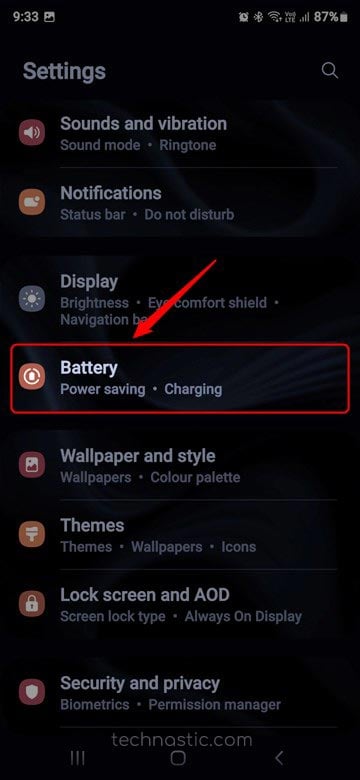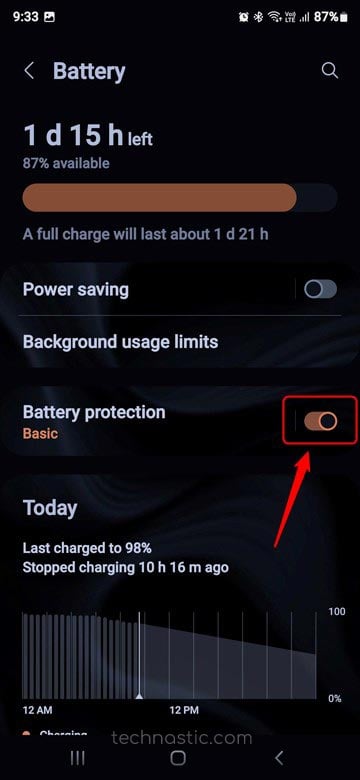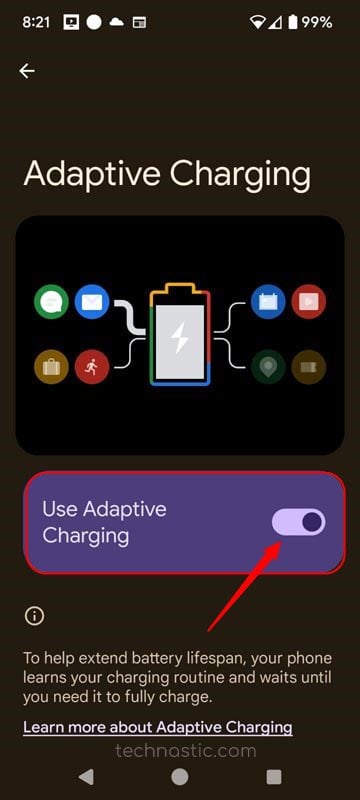- One UI 6: Navigate to Settings > Battery and tap the toggle button next to the Battery Protection.
- One UI 6.1: Navigate to Settings > Battery and Device Care > Battery > More Battery Settings and turn off Protect Battery.
There could be various reasons why an Android phone or tablet doesn’t charge while plugged into a power supply. However, if a device stops charging after reaching the 80 or 85% limit, it could be due to the battery protection feature. By turning off the Adaptive Charging, Protect Battery, or Battery Protection feature on your Samsung phone or Galaxy Tab, you can fix the ‘phone stops charging at 80% or 85%’ problem. Follow the steps in this article to disable this feature from device settings.
Most smartphone manufacturers use charging technologies like PPS (Programmable Power Supply), PD (Power Delivery), and QC (Quick Charge). Samsung Galaxy S20 was the first phone certified for PPS fast charging. PPS allows current and voltage to be adjusted stepwise. It reduces conversion losses to ensure more efficient charging. PPS fast charging is better for Lithium-ion batteries because it produces less heat, and less heat increases the battery’s lifespan.
You must not miss our guide describing the methods to check battery health, charge cycle count, and capacity using ADB commands.
What’s the Battery Protection Feature?
The Battery Protection feature is a part of the PPS charging protocol that programs how a smartphone or tablet charges. The feature is designed to protect the battery from overcharging. Lithium-ion batteries can be damaged if continuously charged after reaching their full capacity. Therefore, smartphone manufacturers implement a safety mechanism that automatically stops charging once the battery reaches around 80-90%.
Battery Protection prevents overcharging and helps prolong the overall battery lifespan. It ensures that the battery retains its maximum capacity for as long as possible and avoids premature degradation. However, this feature can also cause frustration for some users who may think there’s something wrong with their phone or charger when it stops charging at 80%.
Charging behavior may vary among different Android phone models and brands. When enabled, the battery protection feature stops charging at 80%, 85%, or even higher. For example, Samsung One UI 6 phones stop charging at 85% while One UI 7 lets you set the charging limit between 80-95%. Also, if your phone gets too hot while charging, it may stop at a lower percentage to prevent overheating and potential damage to the battery.
Don’t Miss: 20 Tips to Extend the Battery Life on Samsung Phones
How to Turn Off Battery Protection on Android
If your Android phone or tablet is not charging fully (100%) and stops charging at 80%, follow the quick steps below to disable battery protection.
- Open your phone’s Settings. Tap the Gear icon (⚙️) in the Quick Settings screen or the app drawer to open Settings.

- Look for Battery in the Settings menu and tap it.

- Tap the toggle button next to the Protect Battery (One UI 6) or Battery Protection (One UI 6.1) option on the Battery settings screen.
- If you don’t find the battery protection option on your Android phone or tablet, turn off the Use Adaptive Charging option instead.
On older Samsung Galaxy phones, navigate to Settings > Battery and Device Care > Battery > More Battery Settings and turn off Protect Battery.
Now, plug the charging cable into your Android device. It should charge to its full capacity now.


